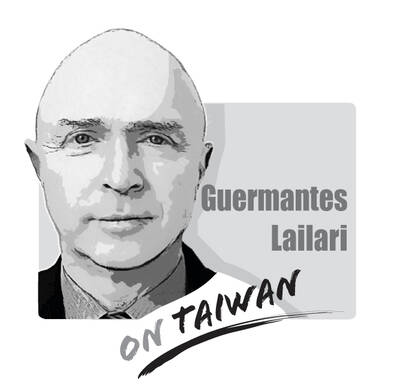Earlier this month, Pxmart Co Ltd president Hsu Chung-jen (徐重仁) commented on the issue of low wages among Taiwan’s young people and accused them of spending more money than other age groups, triggering a strong backlash online.
Some people said Hsu lacked sympathy for young Taiwanese and their way of life, while others said he seemed to have the mindset of a demanding boss who is only good at pointing fingers at others.
Aware of the potential consequences of such a backlash to his business, the retail veteran later posted an apology on Facebook, saying that he should not pass judgement too quickly on the younger generation and that he had decided to speak less and listen more.
Regardless of whether Hsu should make an apology over his personal opinion and whether his observation was wrong, the matter has sparked further discussion among the public about the problems of stagnant wage growth and widening inequality in the nation.
Discussions about low wages and the wealth gap have been going on for many years. Policymakers from both major parties have repeatedly vowed to use all available resources to address these problems. However, apart from hapless attempts to morally persuade Taiwan’s employers, the government has done little to alleviate people’s concerns.
Data about median wages in the nation’s industrial and service sectors released by the Directorate-General of Budget, Accounting and Statistics (DGBAS) late last month showed that the situation is worsening.
The overall median wage last year declined 0.6 percent from a year earlier to NT$40,612 per month, which means that about half of the nation’s employees earned less than NT$40,000 per month. As the median wage for last year was lower than the average wage of NT$48,790 and the gap between the two figures widened from NT$6,026 in 2009 to NT$7,673 in 2015 and to NT$8,178 last year, it is clear that income inequality is growing.
The ratio of median to average wages last year dropped to 83.24 percent from 84.25 percent the previous year, the lowest level since the 2008 global financial crisis. This is another sign that the distribution is skewed toward low wages.
The DGBAS last week pointed to the relocation of local manufacturers to other nations as the main cause of low wages. As the high-paying manufacturing base is shrinking, while the number of low-paying retail and food service jobs is rapidly increasing, it is hardly surprising that wage level growth has nearly stalled over the past 16 years, the DGBAS said.
However, the problem of low wages involves a complicated set of factors and the DGBAS’ reasoning only relates to changes in the nation’s economic structure and social development in the past two decades.
The problems could originate from businesses’ legitimate concerns over taxes, environmental rules, labor competitiveness and other cost issues, but to some extent, it could also be blamed on corporations’ greed and selfishness, exploitation in the workplace or distortions in the labor market.
The government has failed to put enough pressure on businesses for too long.
The nation’s flawed political mechanism is a cause for concern, slowing down policymaking, limiting the scope and effectiveness of relevant policies and making scant progress in fostering an environment where companies have better access to investment funds and can stay profitable — and willing to offer higher pay.
We often hear people say that it will take some time to transform the nation’s economic structure and upgrade its industrial sector, but nothing will happen unless all of us get down to work.
Chinese actor Alan Yu (于朦朧) died after allegedly falling from a building in Beijing on Sept. 11. The actor’s mysterious death was tightly censored on Chinese social media, with discussions and doubts about the incident quickly erased. Even Hong Kong artist Daniel Chan’s (陳曉東) post questioning the truth about the case was automatically deleted, sparking concern among overseas Chinese-speaking communities about the dark culture and severe censorship in China’s entertainment industry. Yu had been under house arrest for days, and forced to drink with the rich and powerful before he died, reports said. He lost his life in this vicious
A recent trio of opinion articles in this newspaper reflects the growing anxiety surrounding Washington’s reported request for Taiwan to shift up to 50 percent of its semiconductor production abroad — a process likely to take 10 years, even under the most serious and coordinated effort. Simon H. Tang (湯先鈍) issued a sharp warning (“US trade threatens silicon shield,” Oct. 4, page 8), calling the move a threat to Taiwan’s “silicon shield,” which he argues deters aggression by making Taiwan indispensable. On the same day, Hsiao Hsi-huei (蕭錫惠) (“Responding to US semiconductor policy shift,” Oct. 4, page 8) focused on
In South Korea, the medical cosmetic industry is fiercely competitive and prices are low, attracting beauty enthusiasts from Taiwan. However, basic medical risks are often overlooked. While sharing a meal with friends recently, I heard one mention that his daughter would be going to South Korea for a cosmetic skincare procedure. I felt a twinge of unease at the time, but seeing as it was just a casual conversation among friends, I simply reminded him to prioritize safety. I never thought that, not long after, I would actually encounter a patient in my clinic with a similar situation. She had

George Santayana wrote: “Those who cannot remember the past are condemned to repeat it.” This article will help readers avoid repeating mistakes by examining four examples from the civil war between the Chinese Communist Party (CCP) forces and the Republic of China (ROC) forces that involved two city sieges and two island invasions. The city sieges compared are Changchun (May to October 1948) and Beiping (November 1948 to January 1949, renamed Beijing after its capture), and attempts to invade Kinmen (October 1949) and Hainan (April 1950). Comparing and contrasting these examples, we can learn how Taiwan may prevent a war with